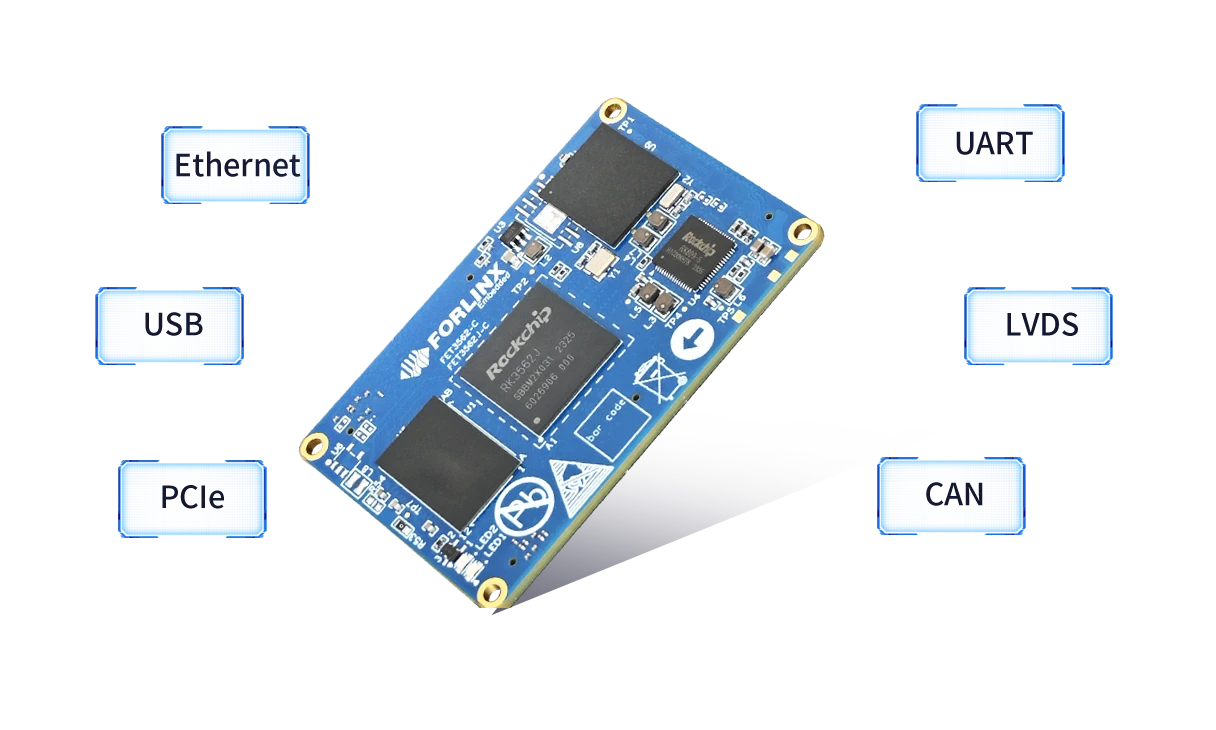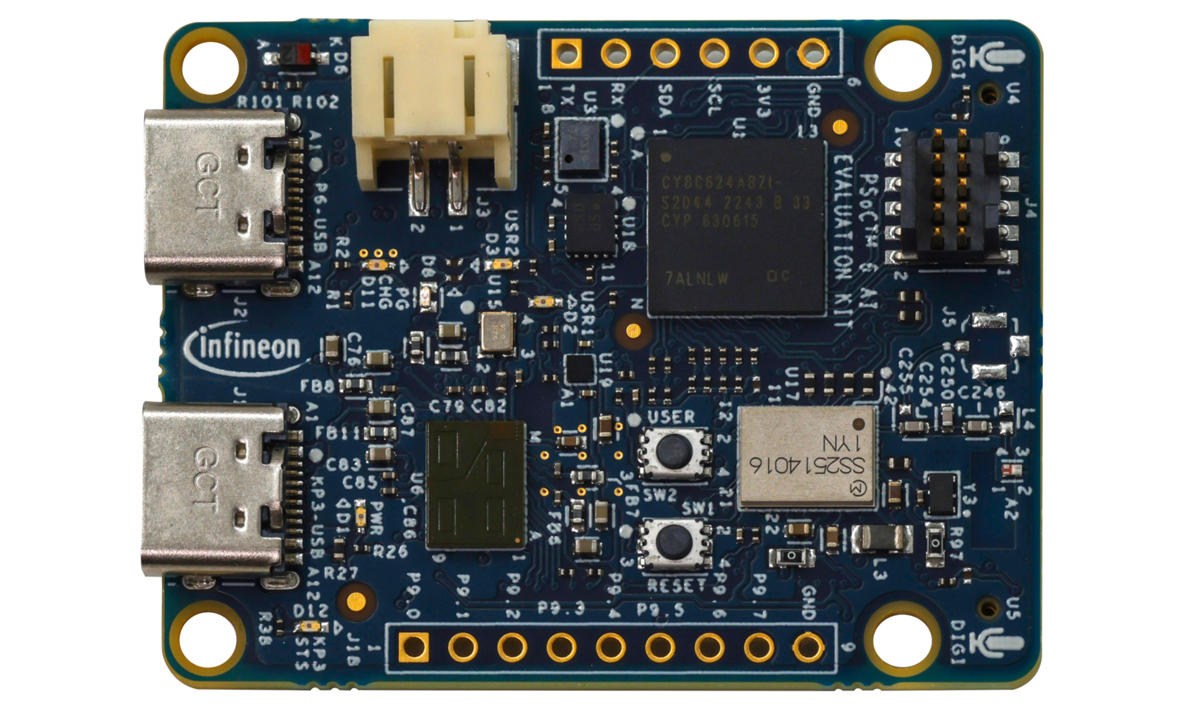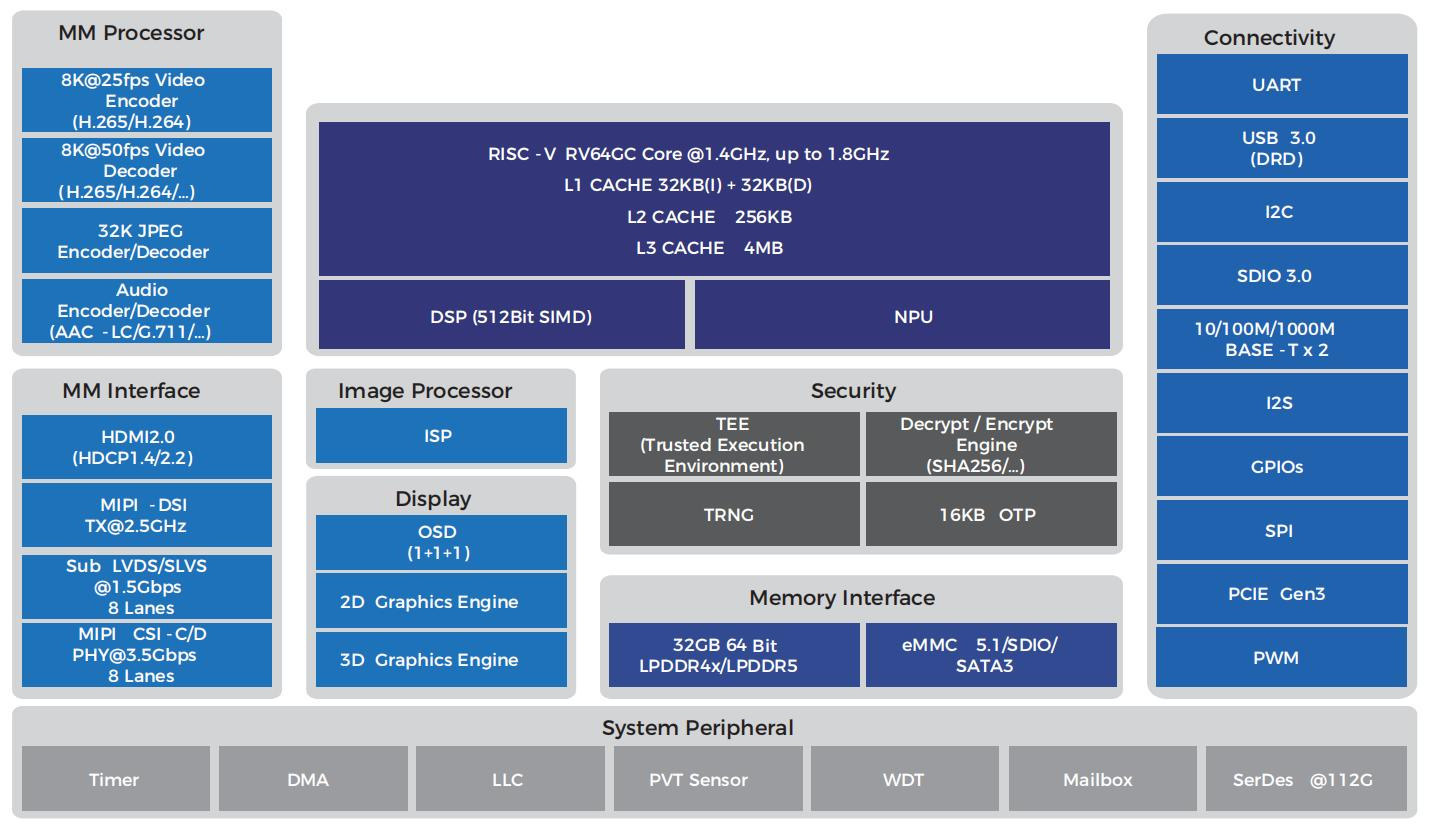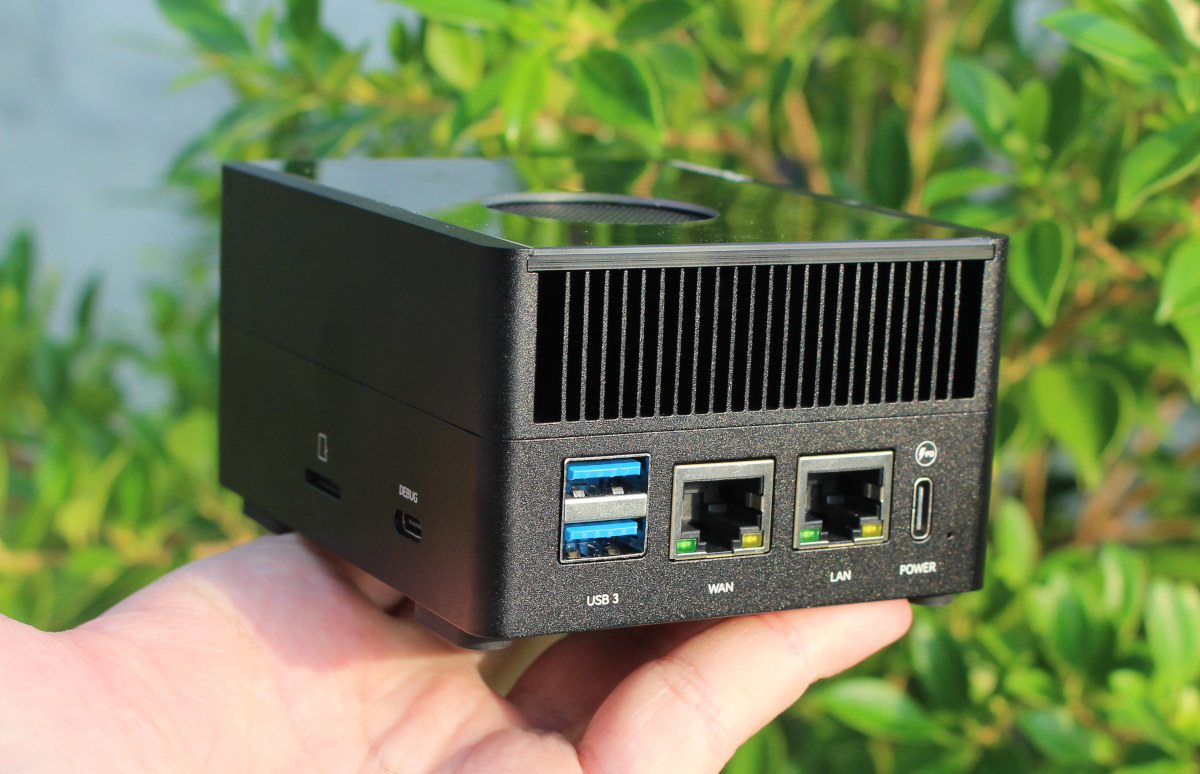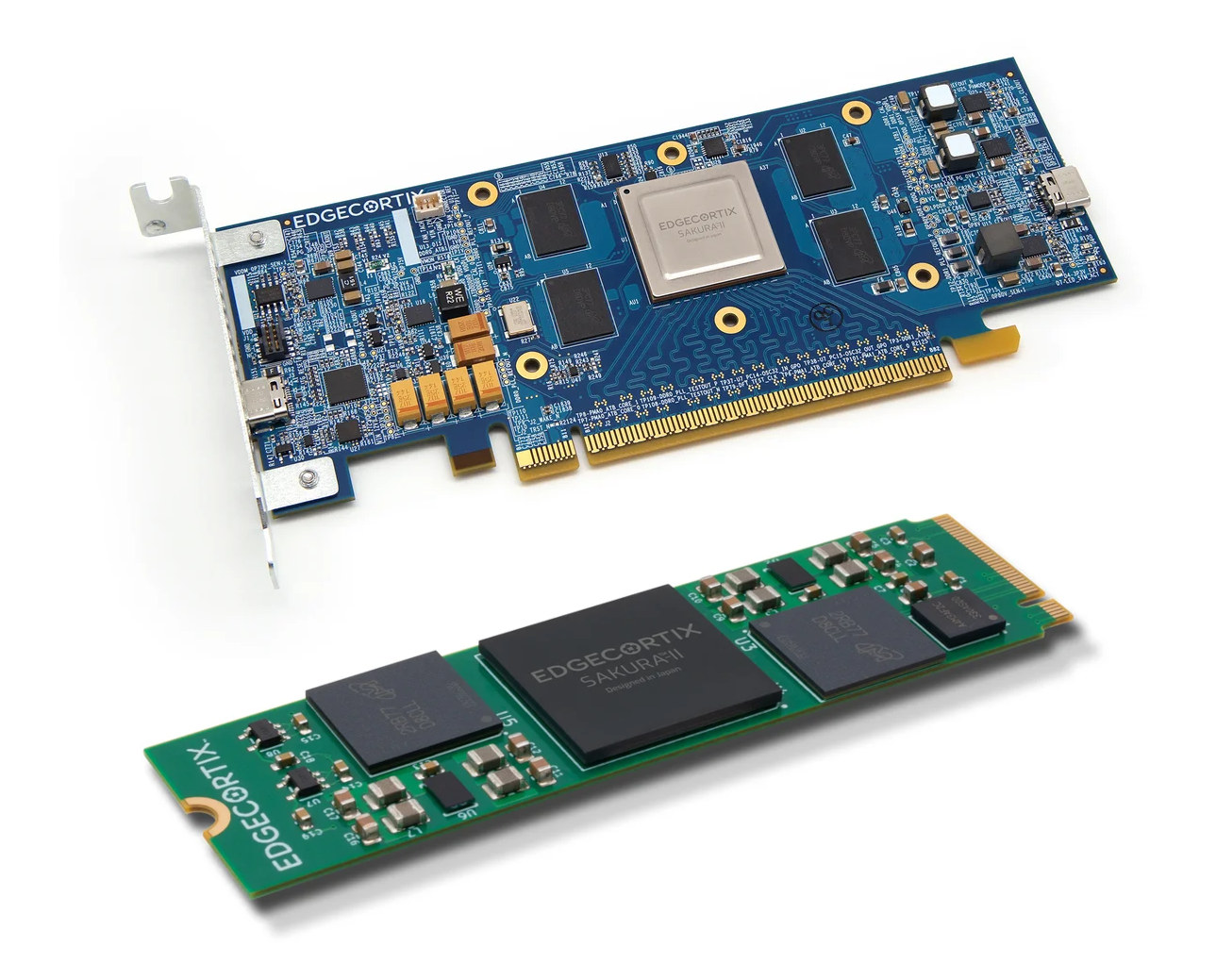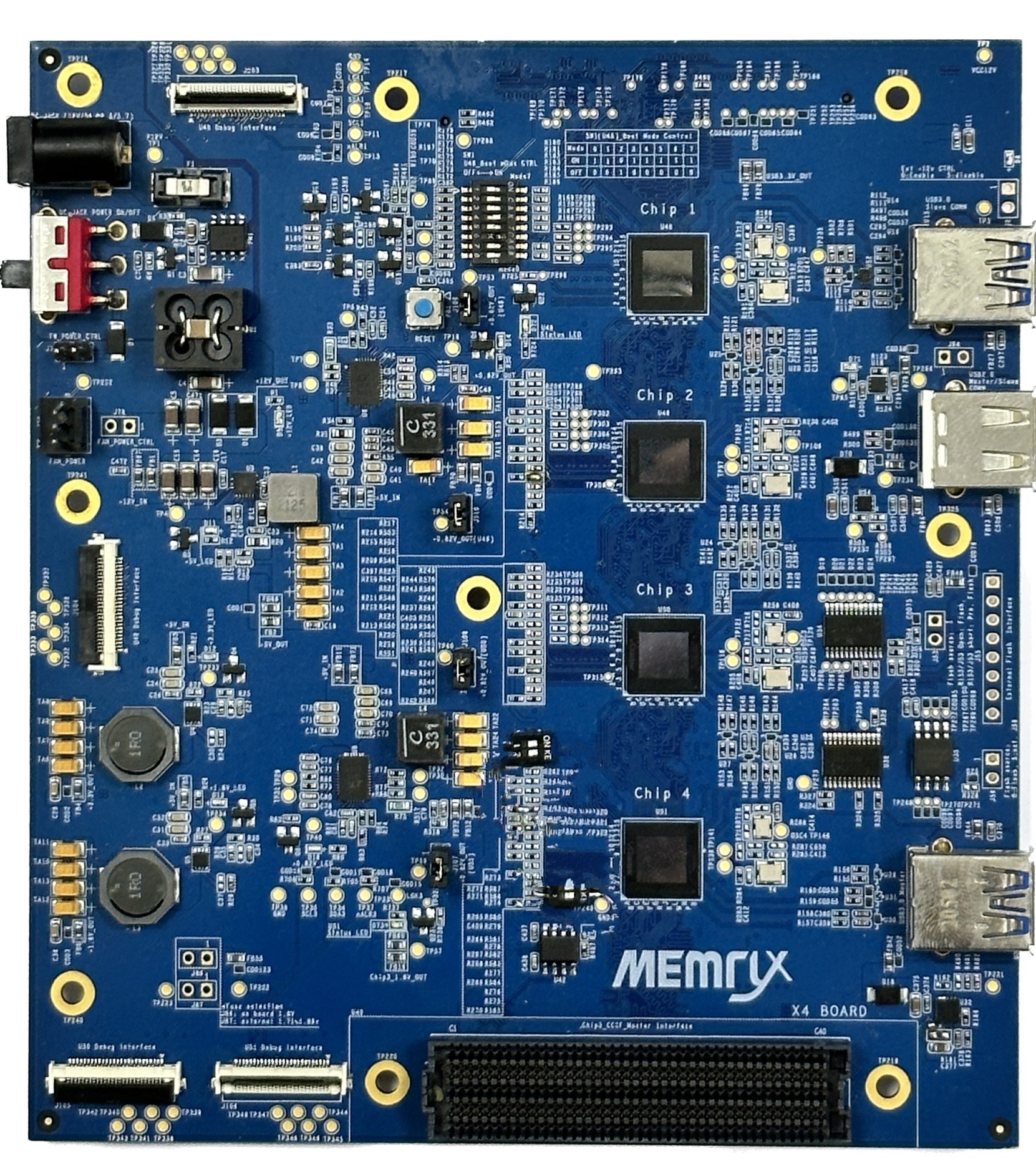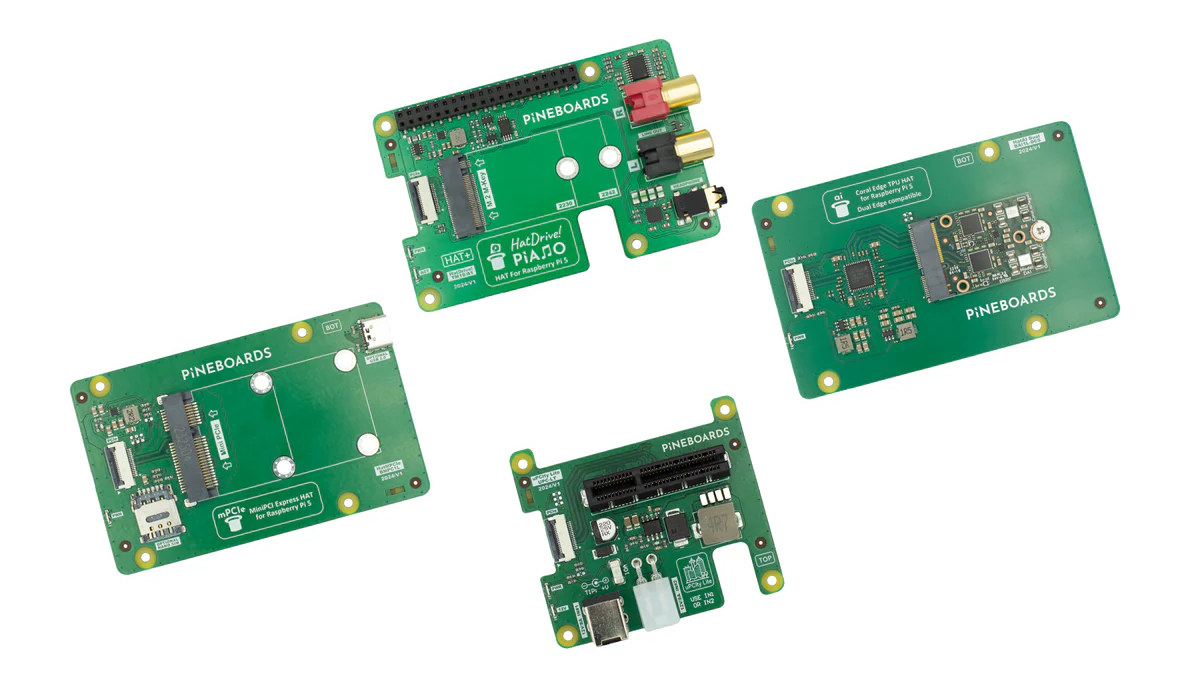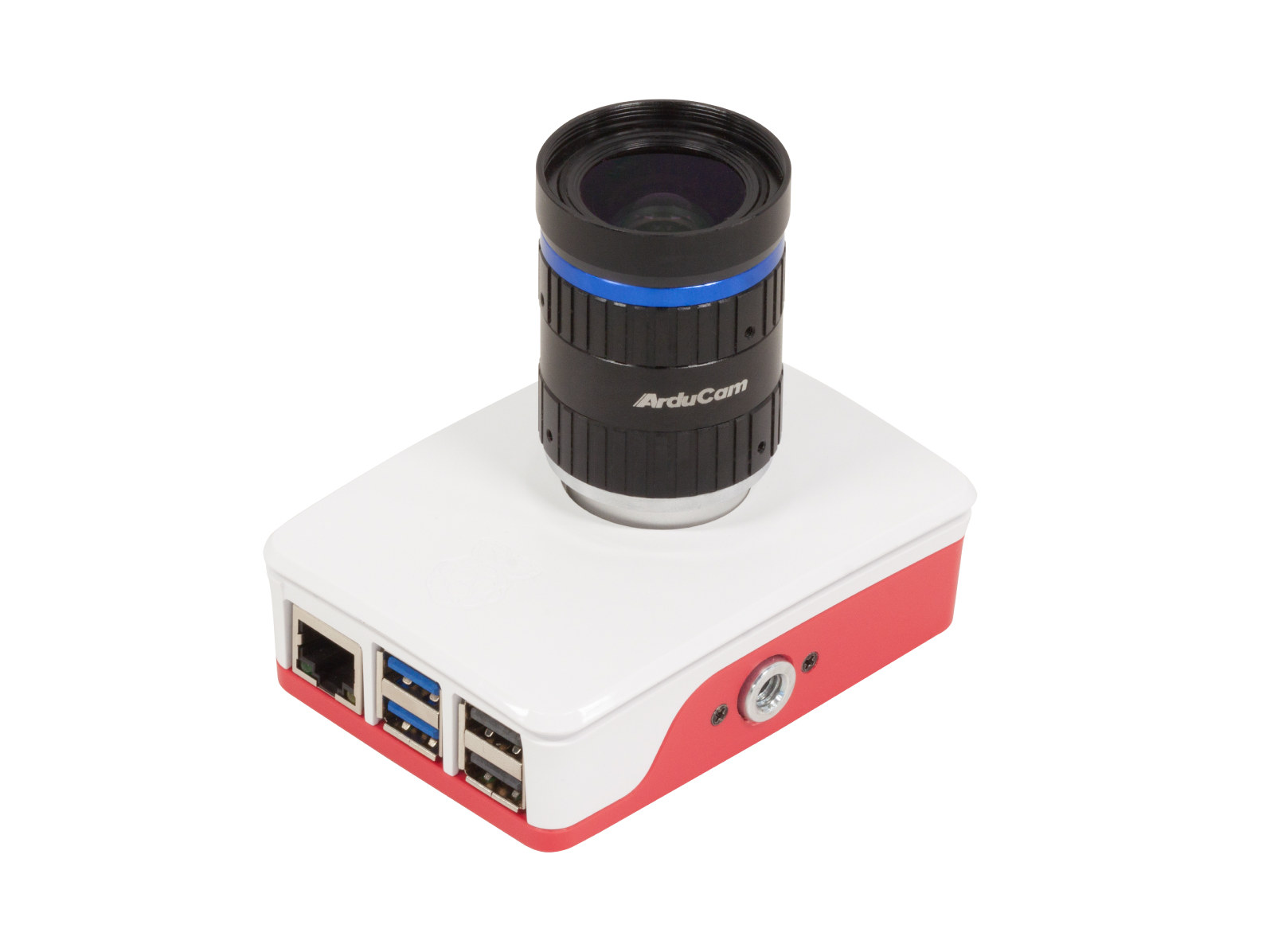The Forlinx FET3562J-C is a Rockchip RK3562/RK3562J powered System-on-Module (SoM) built with a 22nm process and features four high-performance ARM Cortex-A53 cores running at up to 2GHz. It also can support up to 2GB LPDDR4 RAM and can be configured with up to 16GB eMMC storage. Additionally, it has 1 TOPS NPU and standard peripherals like Ethernet, Wifi, Bluetooth, LVDS, MIPI DSI, and much more. All these features make this SoM useful for IoT, automation, and consumer electronic applications. Previously, we have seen Forlinx launch similar SoM with development boards such as the Forlinx RZ/G2L, the FET-MX9352-C, the OK335xS-II and much more feel free to check those out if you are interested in the topic. Forlinx FET3562J-C SoM and carrier board specifications SoM Specifications SoC (one or the other) Rockchip RK3562J – ARM Cortex-A53 quad-core @ 1.8GHz Rockchip RK3562 ARM Cortex-A53 quad-core @ 2.0 GHz NPU – 1 TOPS INT8 […]
Infineon CY8CKIT-062S2-AI PSoC 6 Edge AI evaluation kit features multiple sensors, Arduino headers, Pmod connectors
Infineon CY8CKIT-062S2-AI evaluation kit is a hardware platform built around the PSoC 6 family of MCUs and designed to help developers easily create and test edge AI applications. The dev board features an array of sensors including radar, microphone, magnetometer, IMU, and an air pressure sensor, which make it easy for data collection applications. The board also features Wi-Fi and Bluetooth connectivity and includes an additional expansion header that can be used to connect other modules and sensors. All of these features make this board useful for building a wide range of AI-powered applications, including smart home automation, industrial monitoring, wearables, healthcare devices, and robotics. Previously we have written about similar low-power edge AI modules such as the Digi ConnectCore MP25, the Axiomtek AIE110-XNX, and the Arducam KingKong feel free to check those out if you are interested in such low-power modules. Infineon CY8CKIT-062S2-AI Evaluation Kit specifications: MCU – Infineon […]
ESWIN EIC7700X quad-core RISC-V SoC embeds 19.95 TOPS NPU for Edge AI vision applications
Yesterday we noted Sipeed was working on the LM5A system-on-module powered by ESWIN EIC7700X quad-core RISC-V processor with a ~20 TOPS AI accelerator in order to integrate it into its Lichee Book laptop and other carrier boards. So today, I’ve decided to look into the EIC7700X SoC designed by “BEIJING ESWIN COMPUTING TECHNOLOGY CO., LTD”, or ESWIN for shorts. The EIC770X features four 64-bit RISC-V (RV64GC) cores clocked up to 1.8 GHz, an Imagination AXM-8-256 3D GPU, a 19.95 TOPS NPU, H.265/H.264 video encoder/decoder capable of handling up to 32x 1080p30 videos, various video output (HDMI + DSI) and input interfaces, dual GbE, 4-lane PCIe Gen 3, and more. ESWIN EIC7700X specifications: CPU 4x SiFive Performance P550 RV64GC RISC-V cores @ 1.4GHz (up to 1.8GHz) with Cortex-A75-class performance 32KB(I) + 32KB(D) L1 Cache 256KB L2 Cache 4MB shared L3 Cache Cache supports ECC (support SECDED) DNN Accelerator – 19.95 […]
Radxa Fogwise Airbox edge AI box review – Part 1: Specifications, teardown, and first try
Radxa Fogwise Airbox, also known as Fogwise BM168M, is an edge AI box powered by a SOPHON BM1684X Arm SoC with a built-in 32 TOPS TPU and a VPU capable of handling the decoding of up to 32 HD video streams. The device is equipped with 16GB LPDDR4x RAM and a 64GB eMMC flash and features two gigabit Ethernet RJ45 jacks, a few USB ports, a speaker, and more. Radxa sent us a sample for evaluation. We’ll start the Radxa Fogwise Airbox review by checking out the specifications and the hardware with an unboxing and a teardown, before testing various AI workloads with Tensorflow and/or other frameworks in the second part of the review. Radxa Fogwise Airbox specifications The specifications below come from the product page as of May 30, 2024: SoC – SOPHON SG2300x CPU – Octa-core Arm Cortex-A53 processor up to 2.3 GHz VPU Decoding of up to […]
EdgeCortix SAKURA-II Edge AI accelerator deliver up to 60 TOPS in an 8W power envelope
EdgeCortix has just announced its SAKURA-II Edge AI accelerator with its second-generation Dynamic Neural Accelerator (DNA) architecture delivering up to 60 TOPS (INT8) in an 8Watts power envelope and suitable to run complex generative AI tasks such as Large Language Models (LLMs), Large Vision Models (LVMs), and multi-modal transformer-based applications at the edge. Besides the AI accelerator itself, the company designed a range of M.2 modules and PCIe cards with one or two SAKURA-II chips delivering up to 120 TOPS with INT8, 60 TFLOPS with BF16 to enable generative AI in legacy hardware with a spare M.2 2280 socket or PCIe x8/x16 slot. SAKURA-II Edge AI accelerator SAKURA-II key specifications: Neural Processing Engine – DNA-II second-generation Dynamic Neural Accelerator (DNA) architecture Performance 60 TOPS (INT8) 30 TFLOPS (BF16) DRAM – Dual 64-bit LPDDR4x (8GB,16GB, or 32GB on board) DRAM Bandwidth – 68 GB/sec On-chip SRAM – 20MB Compute Efficiency – […]
MemryX MX3 edge AI accelerator delivers up to 5 TOPS, is offered in die, package, and M.2 and mPCIe modules
Jean-Luc noted the MemryX MX3 edge AI accelerator module while covering the DeGirum ORCA M.2 and USB Edge AI accelerators last month, so today, we’ll have a look at this AI chip and corresponding modules that run computer vision neural networks using common frameworks such as TensorFlow, TensorFlow Lite, ONNX, PyTorch, and Keras. MemryX MX3 Specifications MemryX hasn’t disclosed much performance stats about this chip. All we know is it offers more than 5 TFLOPs. The listed specifications include: Bfloat16 activations Batch = 1 Weights: 4, 8, and 16-bit ~10M parameters stored on-die Host interfaces – PCIe Gen 3 I/O and/or USB 2.0/3.x Power consumption – ~1.0W 1-click compilation for the MX-SDK when mapping neural networks that have multiple layers Under the hood, the MX3 features MemryX Compute Engines (MCE) which are tightly coupled with at-memory computing. This design creates a native, proprietary dataflow architecture that utilizes up to 70% […]
Pineboards adds four more Raspberry Pi 5 PCIe HAT+ boards with PCIe x4 slot, mPCIe socket, Coral Dual Edge TPU support, and audio ports
Pineboards, previously known as PineBerry, has launched four new Raspberry Pi HAT+ with a PCIe interface: the Hat uPCIty Lite, HatDrive! Piano, Hat mPCIe, and Hat Ai! Dual. The Polish company decided to change the name from Pineberry to Pineboards since the “berry” name implied they were manufacturing single-board computers, while Pineboards, not to be confused with Pine64 boards, apparently does not :). Nevertheless, let’s have a look at the four new HAT+ boards. Hat uPCIty Lite – PCIe x4 slot and ATX power supply Specifications: Supported SBCs – Raspberry Pi 5 and other SBCs with a compatible 16-pin PCIe FPC connector and form factor PCIe 16-pin PCIe FPC connector (input) PCIe X4 slot (output) to connect PCIe cards such as NVIDIA or AMD graphics cards; Note: only PCIe x1 Gen2 and Gen3 are supported Misc – 12V and PWR LEDs Power Supply 12V/8A via ATX power connector 12V/8A via […]
Pivistation 5 – A Raspberry Pi 5 Camera Kit to quickly get started with computer vision (Crowdfunding)
Arducam Pivistation 5 is an all-in-one Raspberry Pi 5 camera kit that aims to provide a turnkey hardware and software solution to quickly get started with computer vision applications and offered with a choice of camera sensors designed for various applications. The system looks like a Raspberry Pi 5 SBC housed in the official case fitted with a camera. Three models are available, namely the “Hawkeye” featuring a high-resolution 64MP autofocus camera, the “Darksee” with an 8MP camera sensor with ultra low-light sensitivity, and the “Klarity” with a 20MP camera with fixed focus and a large 1-inch sensor. Pivistation 5 specifications All the cameras above rely on a rolling shutter, but the company is also working on the upcoming Arducam Pivistation 5 Swift model that includes a global shutter for robotics applications. Besides the pre-assembled hardware, the Arducam Pivistation 5 family aims to quicken the development process with pre-installed software […]


